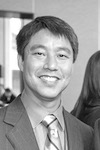
David Inoue
I recently returned from a two-week trip to Japan, mostly a vacation with my family. We traveled across the country all the way from Hiroshima up to Hokkaido. What was significant about those two destinations is that Hiroshima is where my wife was born, and my father grew up in the small town of Hombetsu, Hokkaido. As noted, I did do some work there, including a meeting with the Japan International Cooperation Center (JICE), with whom we work in administering the Kakehashi program.
For JACL, Kakehashi has undergone several changes since it was first implemented for Japanese American as an experiment in 2014 by the Japanese government. It has grown from the initial trip of just a few students to as many as 200 students and chaperones per year.
For a few trips, we also had the opportunity to include Asian American participants. Last year, this expansion was eliminated, at which time we argued for it to be reinstated. It was for the next trip, but it was implemented differently.
As the Kakehashi program has developed, so, too, have the Japanese government’s goals. JACL is only one of the many organizations that the Japanese government partners with in administering the Kakehashi program.
It designs unique programs for each of these organizations that bring different groups to Japan.
Since Asian Americans were added as a part of JACL’s cohort, the Japanese government has added trips in collaboration with the Congressional Black Caucus and the Congressional Hispanic Caucus Institute. Administration of the Asian American student component has now been transferred to the Asian Pacific American Institute for Congressional Studies.
It is unfortunate for JACL, which counts many non-Japanese Americans amongst our membership, but given the Japanese government’s goals, this administrative structure does return the program to the original focus of helping to support college students and young adults in their quest to develop stronger ties to their family’s Japanese heritage.
Throughout my recent trip to Japan, I was constantly reminded of the importance of developing an understanding of my Japanese heritage. I think about how my Japanese wife acts differently in Japan compared to when we are home here in the United States.
I see our two children who, at the most charitable, understand very little Japanese, but are excited by the opportunity to immerse themselves in Japanese culture, including lots of time spent in the onsen.
And yet, none of us, except maybe our 7-year-old son, sees ourselves as being fully a part of Japanese culture. There is that recognition that we are American — and different — even for my wife, who maintains her Japanese citizenship. This was especially brought to the fore in my meeting with the JACL Japan chapter.
Several of my conversations centered around the need for us as Japanese Americans to straddle our two countries. While we fit in more easily than many Americans into Japanese culture, we’re still not Japanese.
We may not fit perfectly, but at least we understand why. I would hope that Kakehashi participants are able to gain some of this understanding of how we retain many aspects of our Japanese backgrounds but remain, at our core, American.
Finally, it is because of this dichotomy of culture that I have worked with the Japanese government and JICE to expand the expectations of the Kakehashi trip. In order to truly create a bridge, an exchange must happen, and for too long the interaction has been more one way.
On the upcoming trip in December, and going forward, participants will be expected to prepare brief presentations about what it means to be Japanese American, particularly in the context of our history of incarceration during World War II.
This may be based on personal family history or research and study. These presentations will be a part of the interactions Kakehashi participants will have with Japanese college students and fulfill the interest of the Japanese government for Japanese students to learn more about the Japanese American experience.
The Kakehashi program is about building bridges. For Japanese American participation in the program, we have the potential to actually BE the bridge. In this role, we can continue our dialogue with the government and people of Japan about JACL: sharing our mission as a civil rights organization and the diverse API communities that our membership represents.
We look forward to receiving applications for the Dec. 16-24 trip, which are due Sept. 22.
David Inoue is executive director of JACL. He is based in the organization’s Washington, D.C., office.



